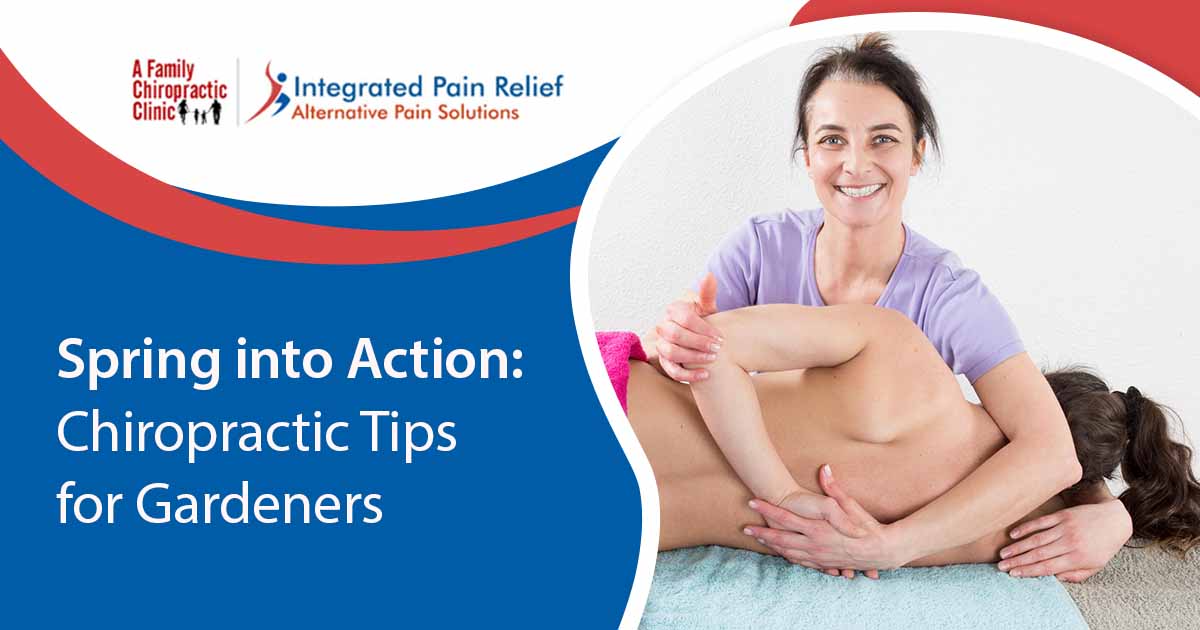Helpful Tips to Make Gardening Easier on Your Back and Body
Spring’s warmer weather means it’s time for gardening and yard work for many people. These activities can be enjoyable and rewarding but also increase your risk for lower back pain and injuries if proper precautions aren’t taken. However, some steps you can take will protect your spine and joints and reduce the risk of potential injuries.
Warm-up Properly First
Before starting any gardening or yard work tasks, warm up your muscles for a few minutes. Warming up with gentle stretches or a few minutes of brisk walking will prepare your body for the physical demands of gardening and yard work.
Stretching Exercises Reduce the Risk of Strain and Injury
Gardening and yard work tasks typically use your hamstrings, quadriceps, and lower back, and focusing on stretches that target the muscles in your back, hips, and legs will improve flexibility and reduce your risk of strain and other injuries.
Core Stability Exercises Improve Balance and Reduce Injuries
Adding core stability exercises such as bridges, bird dogs, and planks to your exercise routine reduces your risk of injuries and improves core stability. Strengthening your abdominals, obliques, and lower back provides essential support for your spine when participating in physical activities.
Regular Chiropractic Care Can Help Reduce the Risk of Back Pain and Injury
Regular chiropractic adjustments are beneficial for maintaining proper joint function and spinal alignment, which reduces the risk of back pain and injury. Our skilled and caring chiropractors can address any existing issues and prevent potential problems in the future.
Practice Smart Lifting and Protect Your Knees
To protect your back and knees when lifting and bending repetitively, use both hands for lifting items, bend with your knees, and do a squat while keeping your back straight. For heavy items, use a wagon, wheelbarrow, or cart to help. Kneeling for long periods of time or on harder surfaces puts a lot of pressure on your knees, and adding cushioning with knee pads can alleviate some of that pressure.
Proper Nutrition and Staying Hydrated Supports Muscle Function
Eating nutrient-rich foods like lean proteins, vegetables, whole grains, and fruits supports muscle function and overall well-being. If you get dehydrated, you are at greater risk of muscle strain and injury, so drink plenty of water.
Listen to Your Body and Take Breaks to Prevent Joint and Spine Pain or Injuries
Pushing yourself too hard can lead to overexertion, muscle fatigue, and strain. While gardening or doing yard work, take regular breaks to rest and rehydrate. If your body is feeling tired, stop working in your garden or yard and get plenty of rest.
Repetitive Motions to Avoid While Enjoying Your Garden
Over time, repetitive gardening movements can cause pain and injuries. Do your best to avoid the following repetitive movements while spending time in your garden:
-
Reduce the Amount Your Body Is Twisting When Gardening.
Gardening uses many twisting movements to reach the area around you, which can lead to injuries. Instead of twisting movements, squarely face what you are working on, don’t overreach, and keep moving to stay close to your work.
-
Avoid Repeatedly Pinching and Pulling with Your Thumb and Finger.
Pinching and pulling repetitively with your thumb and finger occurs most often when using pruning scissors. When holding pruning scissors or other objects, avoid a tight, sustained grip and use a light pinch or grasp.
-
Keep Your Elbows Partially Bent When Digging.
Keeping your elbows partially bent if you are digging a lot can help decrease the risk of injuries, such as tennis elbow.
-
Keep Work Below Shoulder Level to Avoid Rotator Cuff Injuries.
Constantly reaching above your shoulders puts constant stress on your shoulders and can cause shoulder impingement or other types of rotator cuff injury. Use a sturdy ladder to help keep work below shoulder level.
-
Vary Garden Tasks Each Day to Reduce the Risk of Injury.
Doing too much at once can overwork all your muscle groups, and varying the tasks you do in your garden daily can help reduce the risk of aches, strains, and other injuries. Instead of doing different gardening activities that require squatting, digging, and bending in the same way, do each gardening activity on a different day.
-
Use the Proper Gardening Tools to Prevent Backache
Ensure your gardening tools like shovels, hoes, rakes, and spades have the right handle size, spindle length, and weight. Using tools that aren’t appropriate for your size can cause backache or other injuries.
What to Do if I Hurt My Back Gardening?
If you experience back pain as a result of gardening activities, A Family Chiropractic Clinic is happy to help. Our chiropractor can help ensure your spine is in alignment to help reduce back pain caused by gardening. Schedule an appointment for evaluation from our professional team and we can help create a treatment plan that not only addresses your current back pain issues, but also works toward preventing similar injuries in the future.
Get Back Pain Relief from A Family Chiropractic Clinic
Call our offices for a consultation to get to the bottom of your back pain. We treat your pain at the source with the goal of long-lasting pain relief.
Call A Family Chiropractic Clinic at 940-566-000 to learn more about how we treat back, shoulder, hip, and knee pain using non-invasive techniques and chiropractic services.

